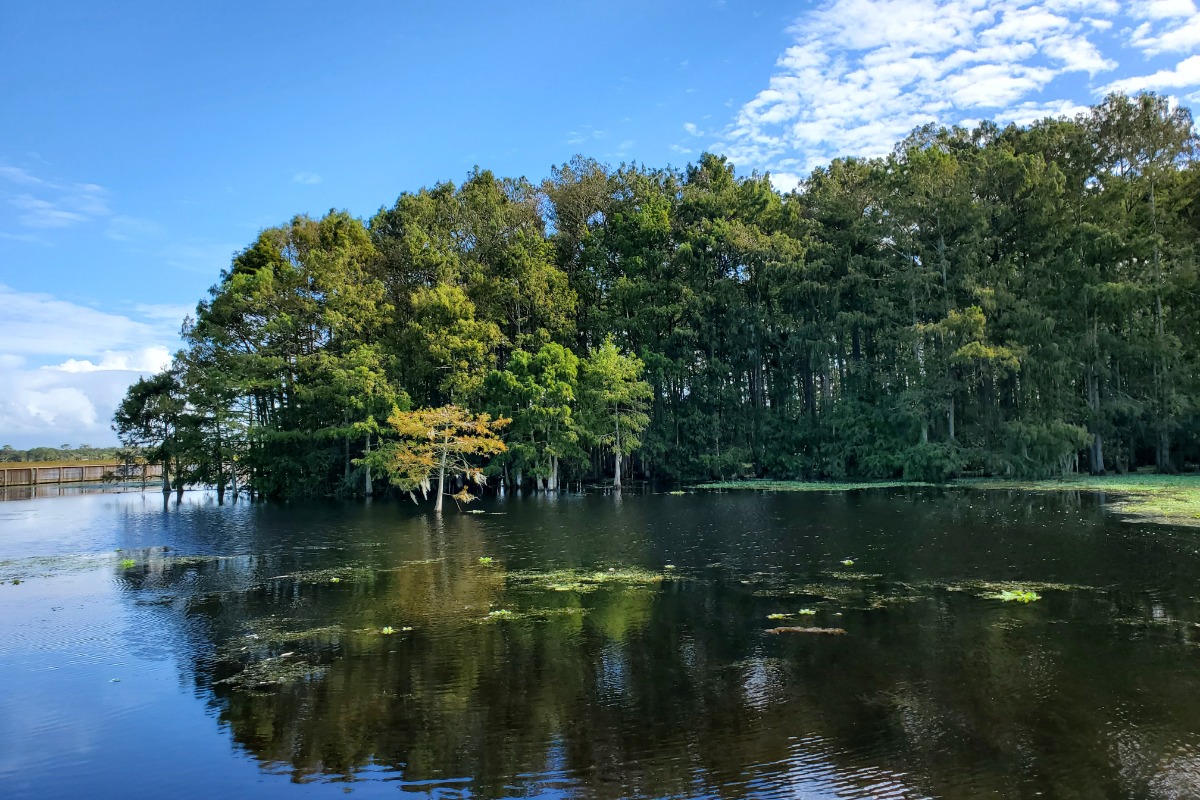If you’re looking for a peaceful hike outside the hustle and bustle of Orlando, check out the Orlando Wetlands. This beautiful, sprawling park offers nearly 18 miles of trails and the opportunity to spot all kinds of Florida wildlife. The park also serves an important purpose for the city of Orlando.
The Orlando Wetlands provide treatment for reclaimed water from Orlando and nearby cities. The water gets naturally purified as it flows through two marshes and a swamp. Wetland plants filter out nitrogen and phosphorus before the water reaches the St. Johns River.
The park’s ecosystem attracts a variety of wildlife. You might see alligators, deer, bobcats, snakes, turtles, or otters. And over 200 bird species call the Orlando Wetlands home. The park is actually part of the Great Florida Birding and Wildlife Trail.
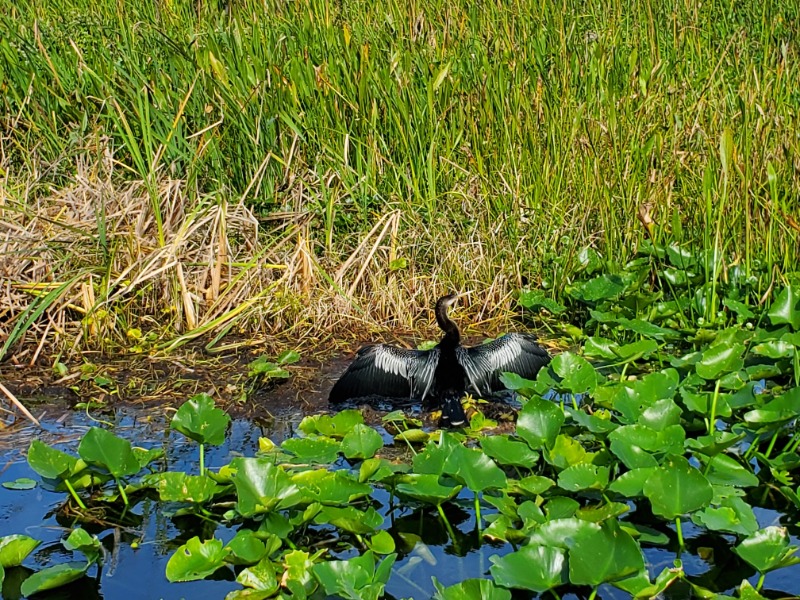
One of my friends recommended this park, so we met up at the Orlando Wetlands on a recent Saturday for a hike.
Where are the Orlando Wetlands located?
The Orlando Wetlands are located in the rural town of Christmas in east Orange County, about half an hour from downtown Orlando. The park’s address is 25155 Wheeler Road, Christmas, FL 32709.
What is there to do at the Orlando Wetlands?
After parking, make sure to sign in at the guestbook near the visitor center. You can also grab a trail map here or download an online map of the park.
The visitor center was closed during my visit due to the recent hurricane. However, it contains a variety of displays featuring live animals and multimedia. The visitor center is open on Fridays and Saturdays year-round, and also on Sundays from September-April.
If your group is less than 10 people, you can take a free tram tour of the Orlando Wetlands. These tours run on Fridays and Saturdays from 9am-3pm year-round, and on Sundays from 9am-3pm from September to April. Keep in mind that the tours are quite popular and operate on a first-come, first-served basis.
During our visit, the tram tour wasn’t running due to the hurricane. Instead, my friend and I hiked part of the park, first heading to Cypress Boardwalk.
Cypress Boardwalk, which opened in 2023, offers stunning views of Lake Searcy and its wildlife. Most of the visitors we saw were hanging out here. It’s definitely a must-see at the Orlando Wetlands.
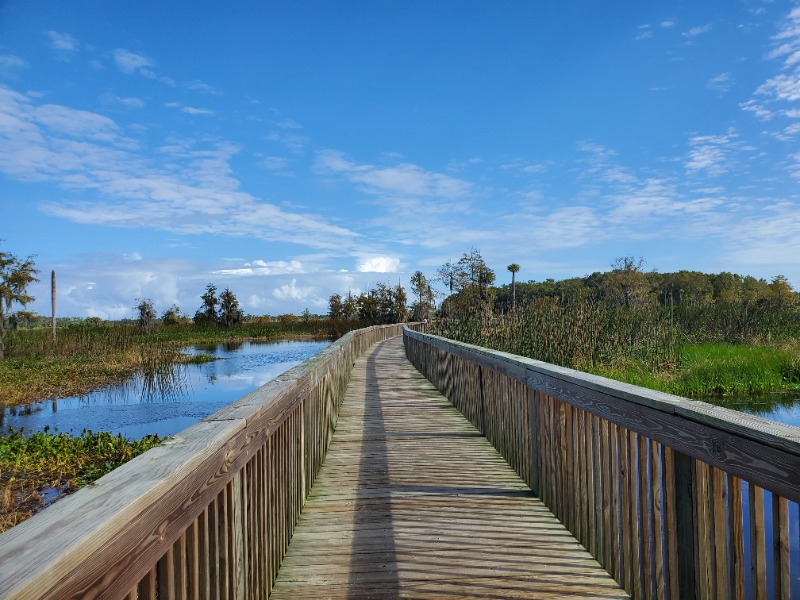
After exiting the boardwalk, you can venture down one of the long trails. One of the trails passes by a hill with a bench where you can relax and enjoy the view.
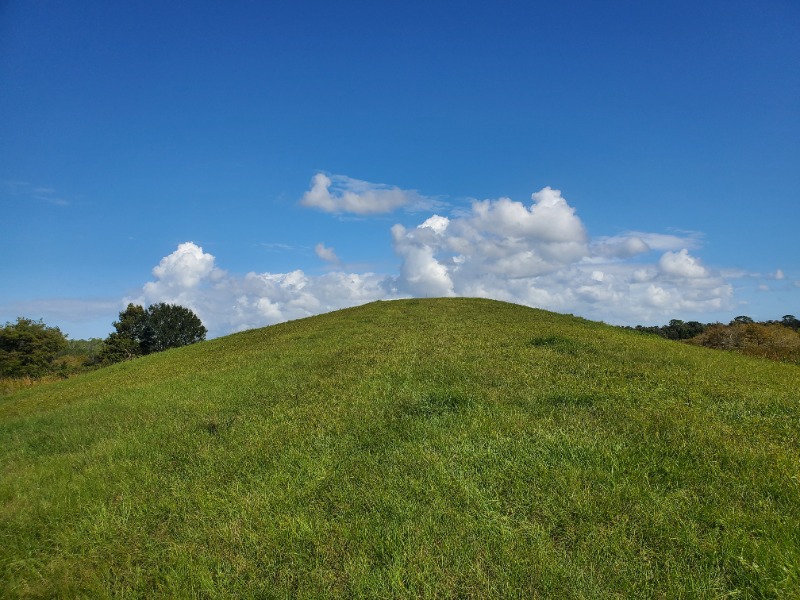
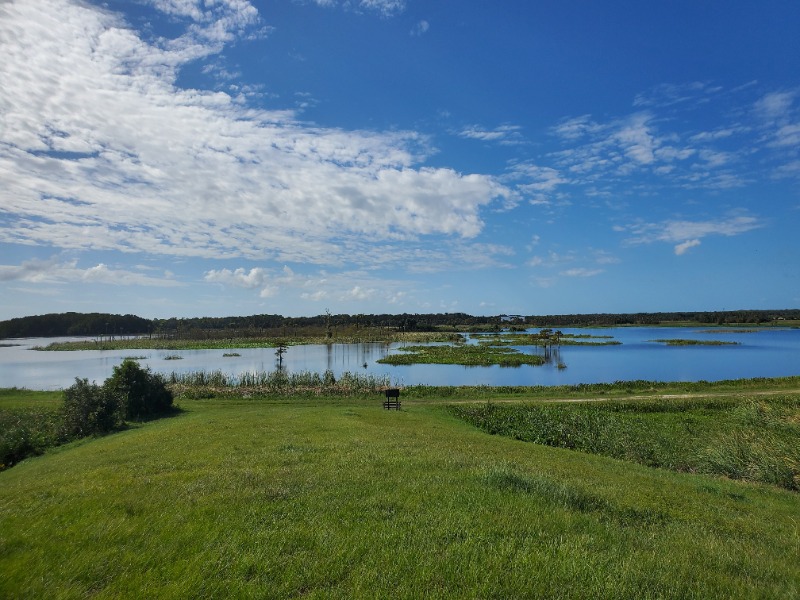
If you backtrack to the park entrance, there’s another trail leading to an inlet where you can observe the water treatment process in action.
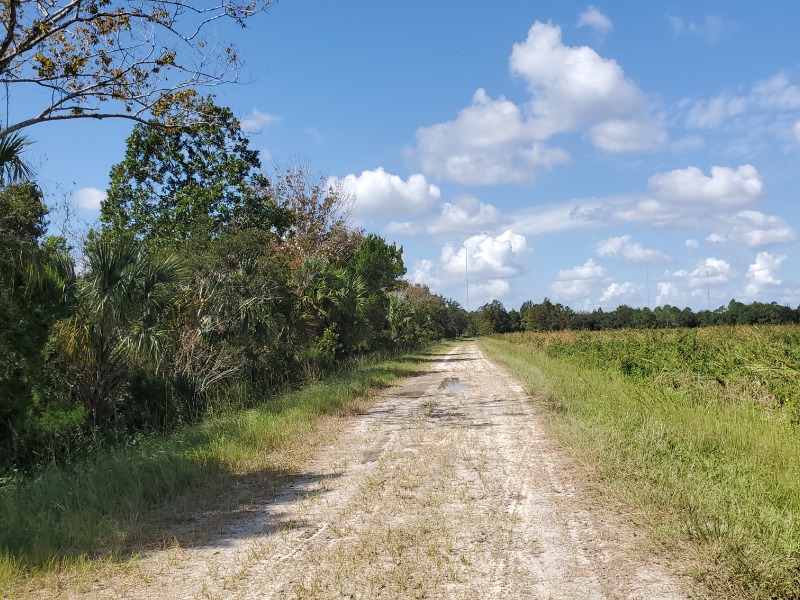
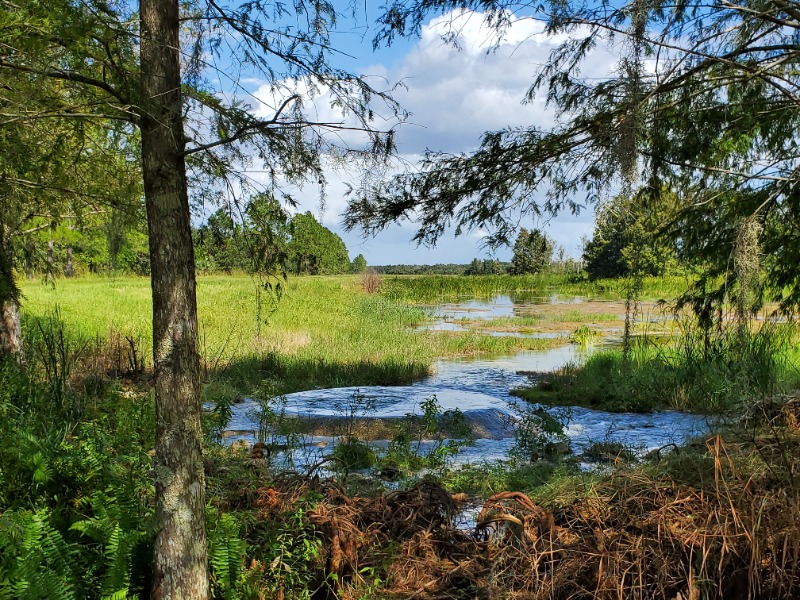
(One of the bodies of water here had been drained, so the smell wasn’t pleasant. Just be aware, sometimes they have to drain the water for maintenance purposes.)
As I mentioned earlier, the park has 18 miles of trails. Our hike was just a fraction of what’s available. You could spend hours exploring the trails here.
What activities are allowed in the park?
The park allows passive recreation activities, such as walking, jogging, biking, horseback riding, wildlife/bird watching, and nature photography.
The following activities are prohibited: littering, swimming, hunting, fishing, boating, camping, driving motorized vehicles, bringing plants or animals (including pets) into the park, and launching or landing drones. However, mobility devices such as wheelchairs are permitted.
How much does it cost to visit the Orlando Wetlands?
The Orlando Wetlands are free to visit.
What are the park hours?
The Orlando Wetlands are open from sunrise to sunset Tuesdays-Sundays. The park is closed Mondays.
How long does it take to visit the park?
According to the park’s website, it takes 2-4 hours to visit the park.
How close do the alligators get?
Be cautioned, the gators at the Orlando Wetlands can get up close and personal. My friend and I were about to exit the boardwalk when we spotted this gator hanging out by the gate.
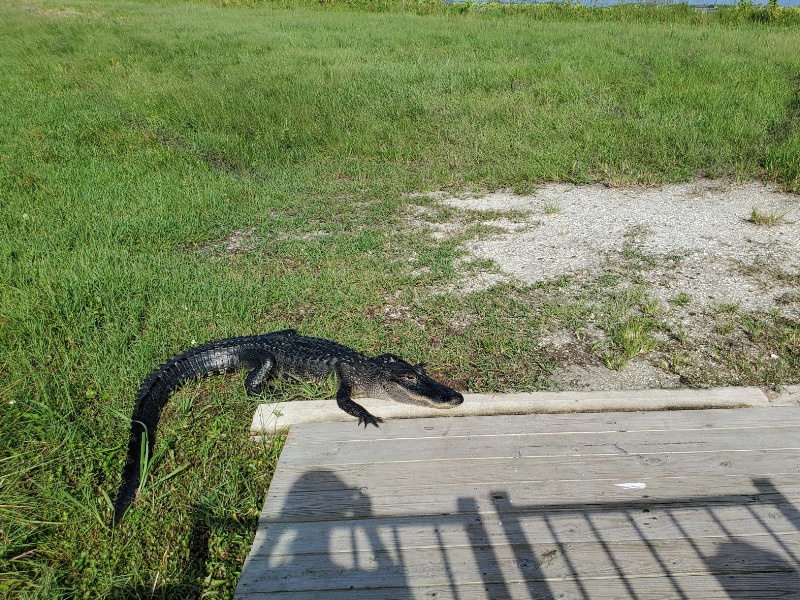
While hiking past the lake, we turned back because a gator was sitting near the path, and there wasn’t much space to maneuver around it. Then we encountered another gator on our way back. Luckily, it was facing away from the path and splashed into the water as we approached.
For every gator you see on the shore, there are many more in the water. So definitely be respectful of the wildlife while you’re out hiking.
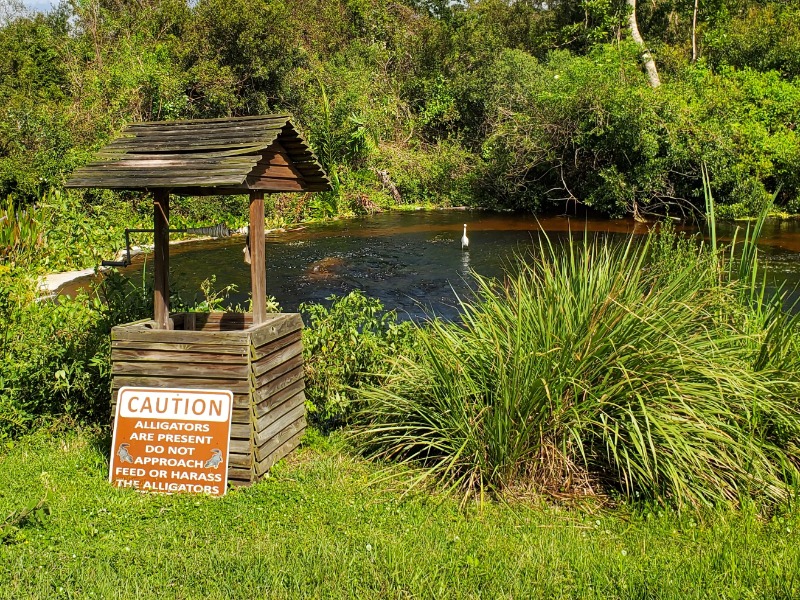
What should I bring when visiting the Orlando Wetlands?
When visiting the Orlando Wetlands, make sure to bring the following:
- Comfortable, closed-toe walking shoes. Fire ants live in the park, and you don’t want to get bitten by those. The trails can also get muddy if it’s been raining, so some water-resistant hiking boots are a good idea.
- Sunscreen. The boardwalk and most of the berm trails are not shaded.
- A hat. That Florida sun is brutal.
- Insect repellant. Being near the water in Florida means dealing with mosquitoes.
- Water and snacks. You’ll need them to stay fueled up during that long hike. There’s no food for purchase in the park (although you can buy water and soda at the visitor center), and there aren’t any grocery stores or restaurants nearby.
Does the park have restrooms?
Yes, there are restrooms outside the visitor center. They were pretty clean when I visited.
What is the Orlando Wetlands Festival?
The Orlando Wetlands Festival is a family event that highlights Orlando’s water reclamation efforts. The festival includes educational exhibits, guided bus tours of the park, guided hikes, kids’ games and activities, food, and live music. The next Orlando Wetlands Festival takes place on February 22, 2025.
What else is there to do nearby?
The Orlando Wetlands are a short drive from Fort Christmas Historical Park. This pioneer village features historic homes and a replica of Fort Christmas. It’s free to visit and has some interesting exhibits.
Conclusion – The Orlando Wetlands: A Unique Florida Hiking Experience
The Orlando Wetlands provide a unique hiking experience. The park offers beautiful views and the opportunity to see a variety of Florida wildlife. The water-treatment aspect of the park adds an interesting touch to the experience.
Even though it’s a manmade park, venturing out here feels like a “real Florida” experience. It’s one worth visiting.
